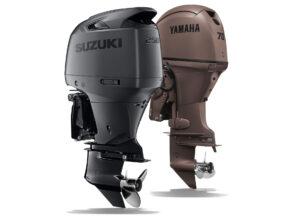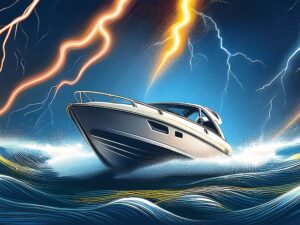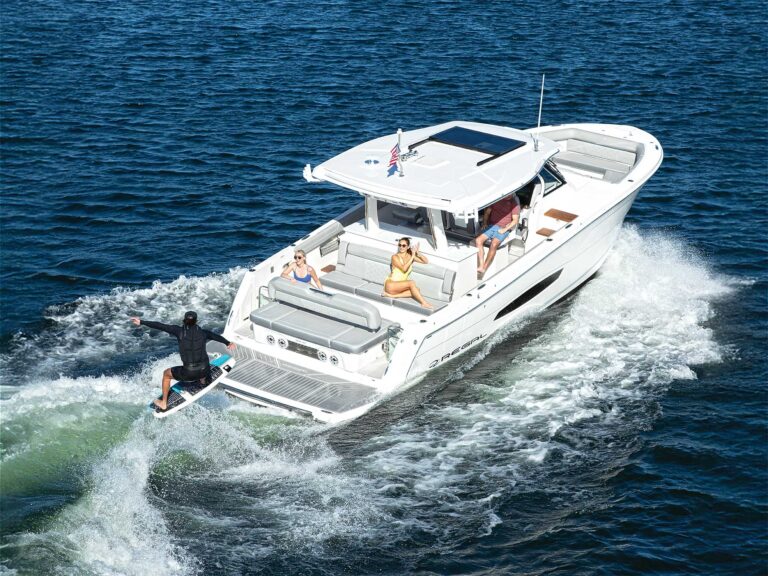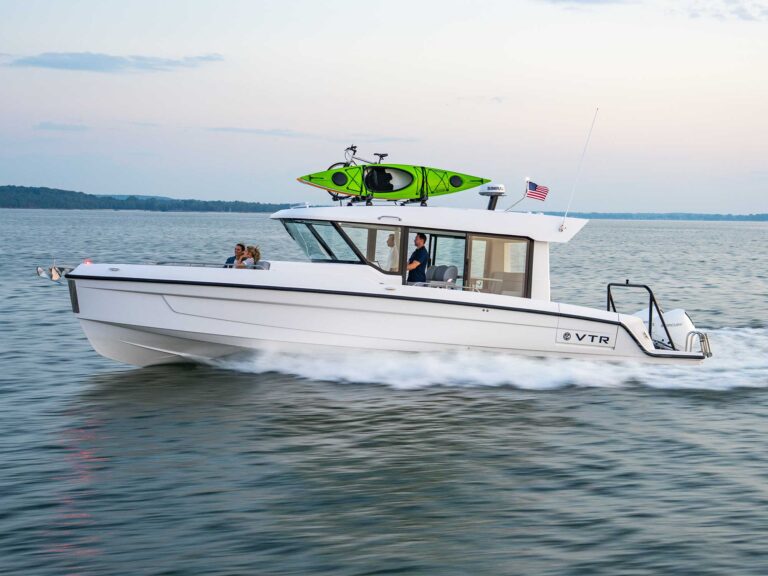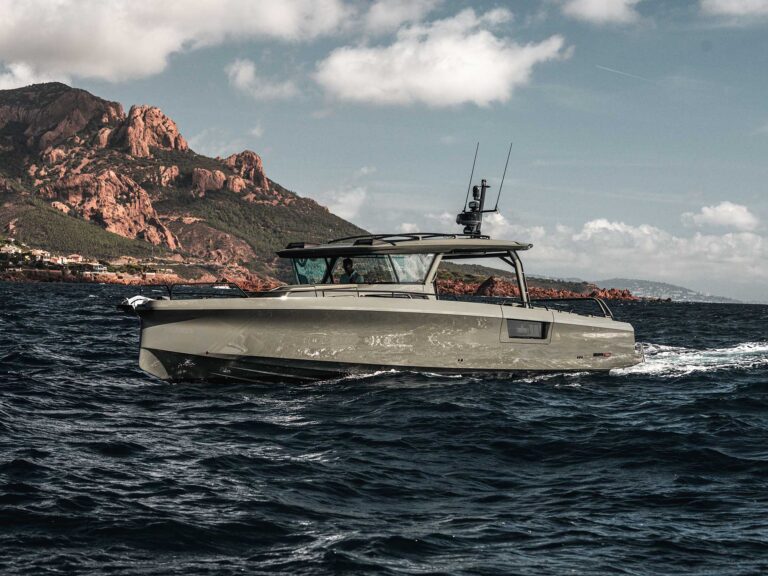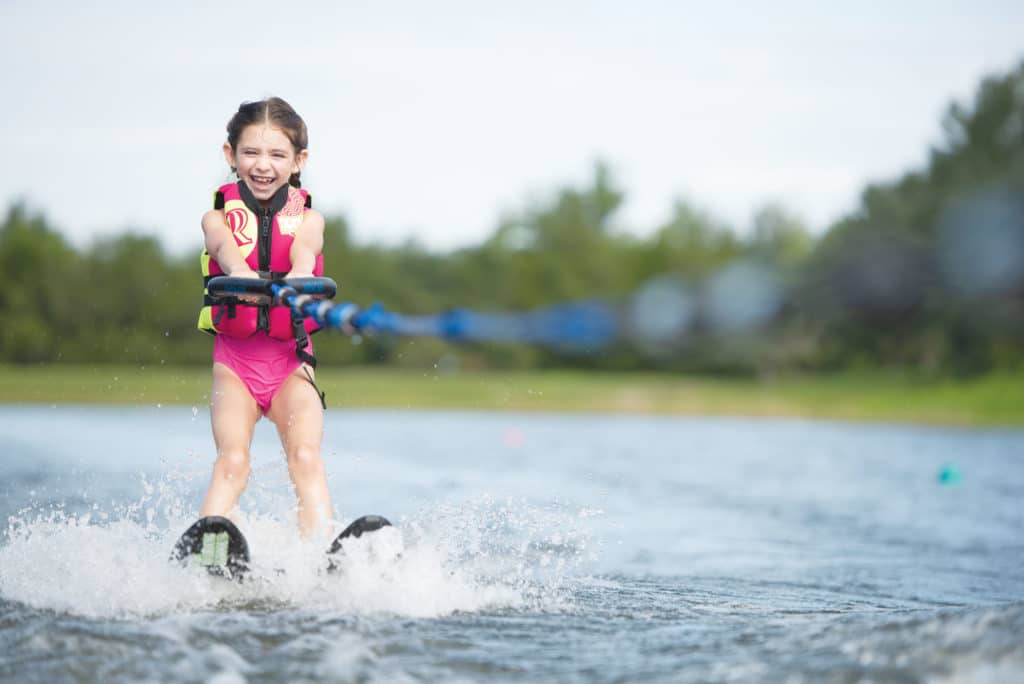
A few years ago, we asked the legendary Travis Moye to share, in his own words, how to teach kids to water-ski. A former national champion water-skier, Moye now owns and operates the Boarding School (theboardingschool.com) in Orlando, Florida, where he coaches kids and adults in skiing, wakeboarding and wakesurfing. He also happens to be a world-class boat driver who mans the helm during many professional watersports events. In his time on the water, Moye has taught the sport at all levels. Here’s the expert advice he had to share, done with the help of his daughter Lennon.
First-Timers
One of the biggest obstacles in teaching little kids to ski is getting them comfortable with the idea of being behind the boat, away from their parents. I can remember floating in the middle of a big lake as a child, wondering what could be lurking under me as the boat drove away in a large circle to come back. Depending on the age and willingness of your child, you can take a few steps to raise their comfort level before putting them on a pair of skis. I believe any time behind the boat (even on a tube) helps. But I prefer to do something in which they hold on to a handle so they can feel that sensation.

How Tubing Can Help Skiing
As you can see, I am on an inflatable disc with Lennon so she can stand and hold the handle. The beauty of this is you can go incredibly slow (we are in idle). If you don’t have something like this, you can use a kneeboard, wakesurfer or sled. I always start with the rope short so you can maintain eye contact with the child and talk to them from the back of the boat. As they get more comfortable, start letting the rope out so they are farther and farther away from you. Just make a game of it, and before you know it, they will be all the way out on the rope, cruising around with a big smile.

Stand Tall
When your child is ready to move from tubes to skis, it is best to get them familiar with the skis on land. Have them try on the skis and make sure the bindings are snug but comfortable, and show them how to hold the rope. You can even pull them by hand in the grass to have them get the feel of what it’s like standing on skis. Radar makes a pair called the Firebolt Combo that kids can color to help them enjoy the learning-to-ski process ($149.99, radarskis.com).
Moving Onto Skis
Once they are comfortable being pulled by the boat, or of an age when you don’t think you need to worry about it, it’s time to strap them in some skis. I always start on dry land so they can experience some of the feelings before hopping in the water. Depending on the size of the child, you can pull them around in the grass if you like, but at a minimum, have them put on the skis and sit down on them, then give them a handle. The two most important things are to keep your arms completely straight and knees completely bent. You can pull them up while standing on shore and show them what happens if they pull with their arms or if they push with their legs. Both will result in either sliding under the handle and falling back or toppling over the front. When done properly, it will take little effort by the person holding the handle and by the skier.

Learning Control
I go over the same drill with them in the water, with the tip of the skis touching the platform. That way, you can stand on the platform and pull the handle, and they will simply rock up out of the water. With my older daughter, Ella, I’m using a rope with a handle on each end. The great thing about this is you maintain more control over them, and they can see and talk to you. If they fall, you can let go of your handle instead of dragging them through the water. As you can see, she always keeps her arms straight and knees slightly bent. Once they have gotten up and cruised around successfully several times, you can go ahead and put the rope on the pylon. One crucial thing when teaching anyone is to keep the speed slow. Ella weighs around 50 pounds, and we are going 10 mph. You may have to go a little slower or faster depending on the size of your child and when the wake forms on your boat. But slower is always better to start.

Starting to Slalom-Ski
Now that you can navigate two skis, it’s time to slalom. You can learn to drop a ski but, ultimately, we want to do a deepwater start. The start isn’t that different than getting up on a pair of skis, there is just more balance involved. So, just like with two skis, we are going to keep our knees completely bent and arms completely straight. The balance really comes from engaging your core, which will help keep you in a ball and allow you to rock up on the water; otherwise, your upper and lower body become independent of each other, making it easier to get pulled out. You also want to keep your ski pointed to the side. If you are right-foot forward, point it to the right, and vice versa. When the boat starts to pull you, it will always pull the ski in toward the rope, so the more you angle the ski will help. I generally like to teach people with the back foot in the binding, but if you need to, you can drag your back foot behind you to start. Don’t be in a rush to jam it in the binding once you’re up. Take time to get balanced out and place it on the back of the ski. Now you just keep your knees slightly bent and arms straight.
Read Next: Waterskis for Kids
Once you are up, you can slowly navigate from side to side. You don’t want to start doing fast wake crossings or big turns at first, but rather pull out on the side of the boat and maintain a lean, focusing on the same body position you have while standing behind the boat. You should learn to do this on both sides of the boat before working on crossing the wakes.
How to Get Up On Two Skis
Here are five specific tips for getting up on two skis for the first time.
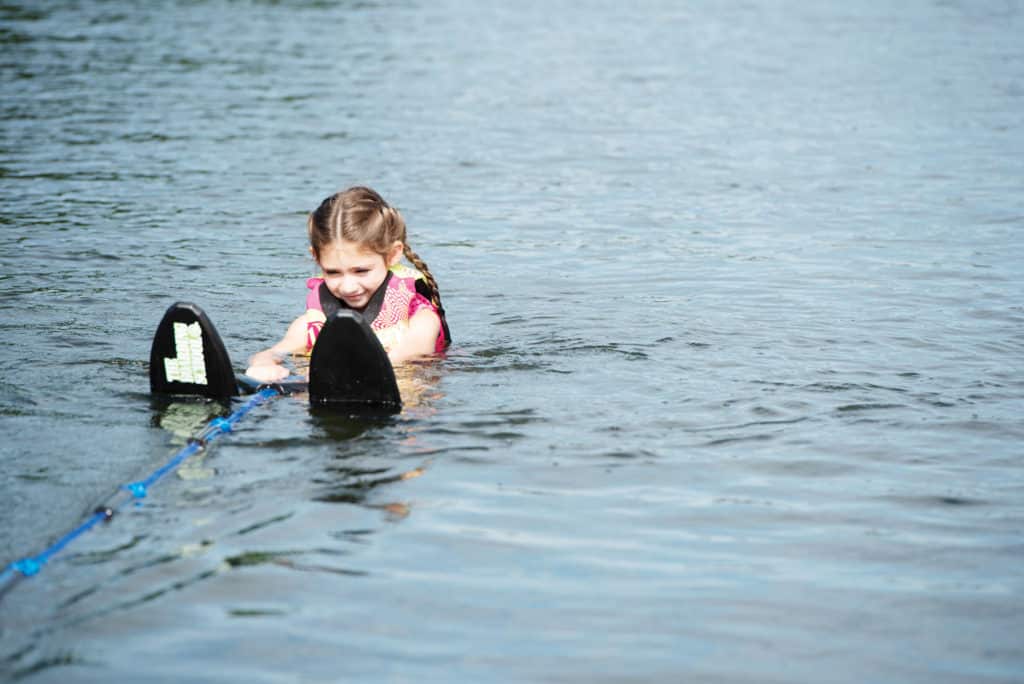
1. Use a ski rope, which has a bit more stretch, of 75 feet in length to keep the skier in cleaner water behind the boat. The skier should sit in a cannonball position, with their knees squeezed together close to their chest and their arms straight. The rope should sit between the skis, with the ski tips pointing up and out of the water.

2. The boat’s driver should idle forward until the towrope is taut behind the boat, then accelerate at a slow and steady pace to pull the young skier out of the water without jerking them forward. With young skiers on two skis, the driver should keep the boat at low-planing speeds and not accelerate beyond 25 mph.
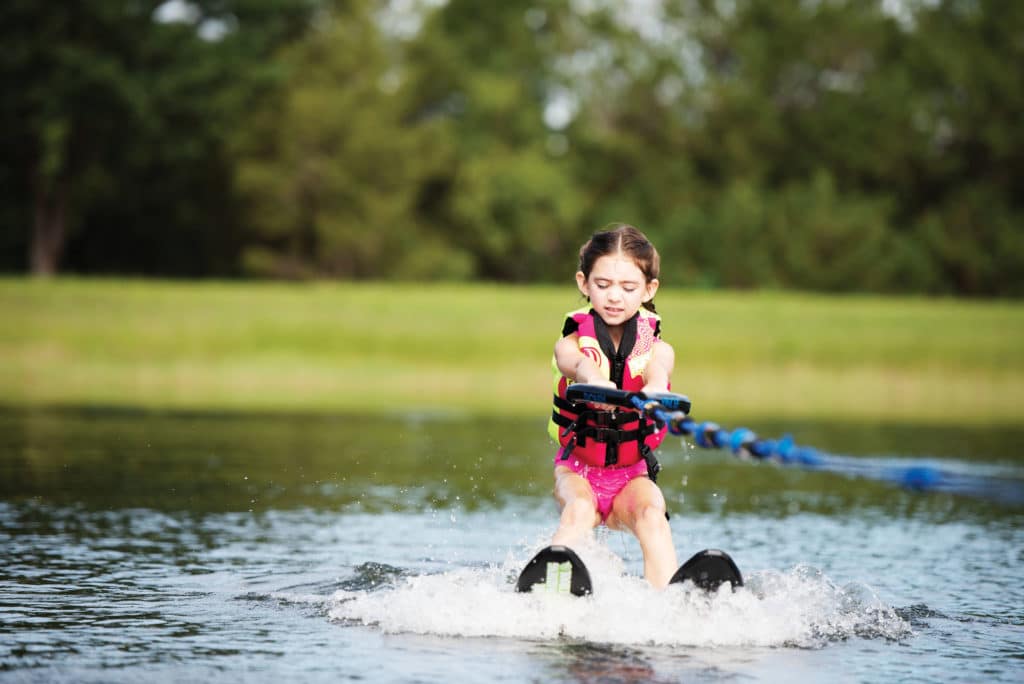
3. The skier should let the boat pull them out of the water, remaining in the crouched position until the skis are planing in the water underneath them. Then they should slowly straighten their legs while keeping their arms straight in front of them.

4. Once the skier is comfortable, they should align their hips under their shoulders and concentrate on aiming the skis to crisscross inside the wake. Once comfortable with changing direction, it’s time to head outside the wake.
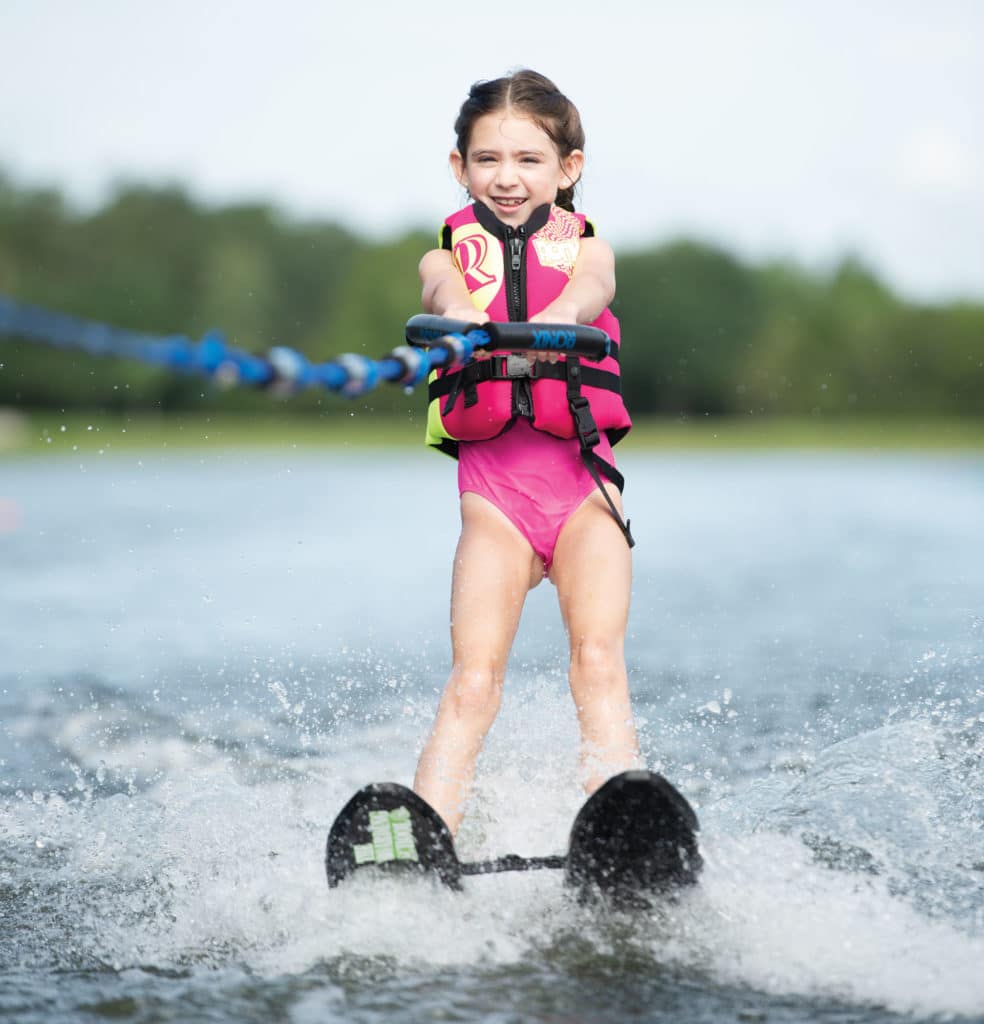
5. If the skier falls, remember to let go of the handle. The spotter should immediately alert the boat driver to circle back to help the skier restart or climb back inside the boat.

